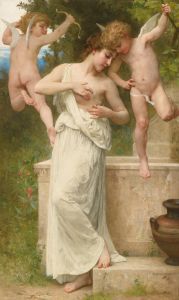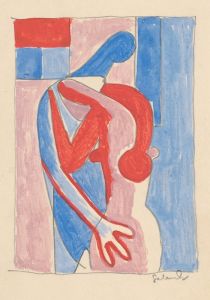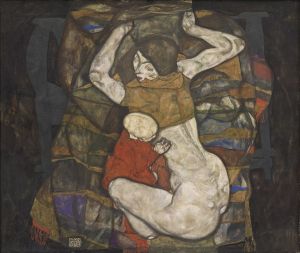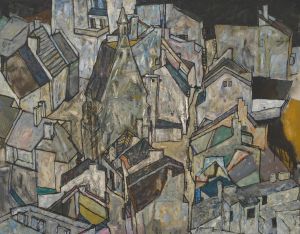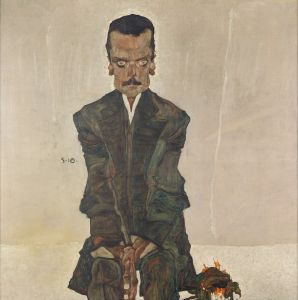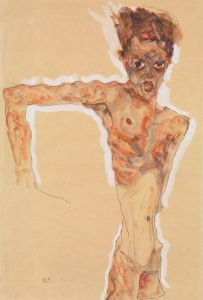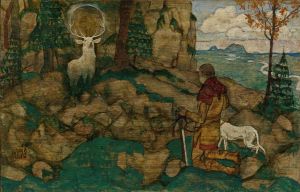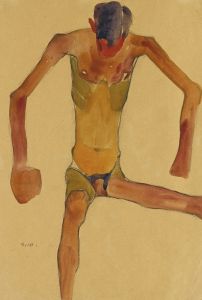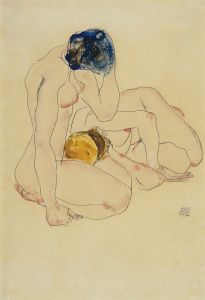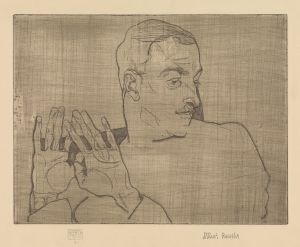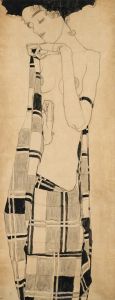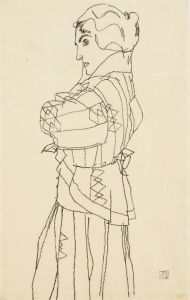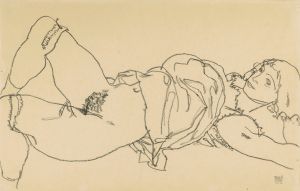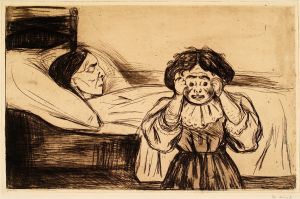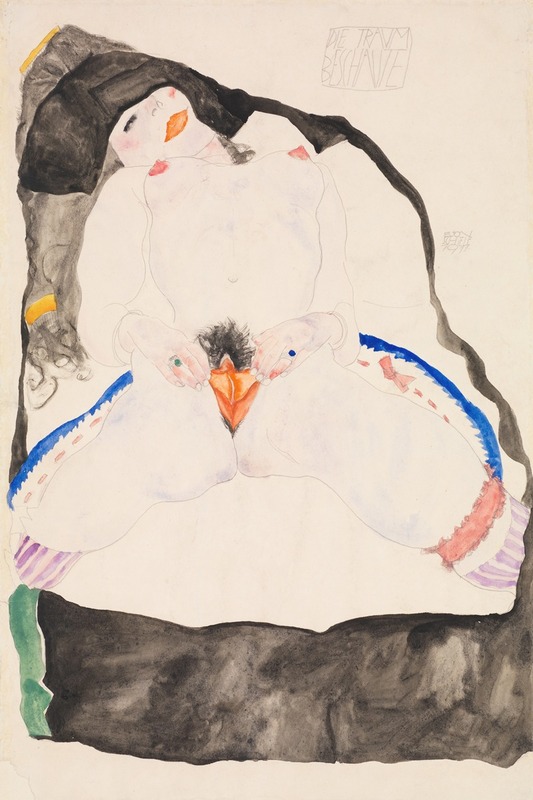
Observed in a Dream
A hand-painted replica of Egon Schiele’s masterpiece Observed in a Dream, meticulously crafted by professional artists to capture the true essence of the original. Each piece is created with museum-quality canvas and rare mineral pigments, carefully painted by experienced artists with delicate brushstrokes and rich, layered colors to perfectly recreate the texture of the original artwork. Unlike machine-printed reproductions, this hand-painted version brings the painting to life, infused with the artist’s emotions and skill in every stroke. Whether for personal collection or home decoration, it instantly elevates the artistic atmosphere of any space.
Egon Schiele, an Austrian painter known for his distinctive style and contribution to early 20th-century art, created the artwork "Observed in a Dream" in 1911. Schiele was a protégé of Gustav Klimt and a significant figure in the Expressionist movement, which sought to convey emotional experience rather than physical reality. His works are often characterized by their intensity, raw emotion, and exploration of the human form.
"Observed in a Dream" is a notable example of Schiele's exploration of psychological themes and the human psyche. The painting reflects his interest in dreams and the subconscious, a theme that was gaining prominence in the art world at the time, influenced by the burgeoning field of psychoanalysis led by Sigmund Freud, also based in Vienna. Schiele's work often delved into the complexities of human emotion and identity, and this painting is no exception.
The composition of "Observed in a Dream" features Schiele's signature style, marked by bold lines, distorted figures, and a striking use of color. His figures often appear emaciated and contorted, emphasizing vulnerability and existential angst. This approach was part of Schiele's broader attempt to break away from traditional artistic norms and to express the deeper, often darker aspects of human nature.
In "Observed in a Dream," Schiele employs a limited color palette, which enhances the dreamlike quality of the piece. The figures in the painting are rendered with a sense of immediacy and tension, capturing the viewer's attention and inviting them to ponder the narrative behind the dream. Schiele's use of line and form in this work is particularly noteworthy; his lines are both delicate and assertive, creating a dynamic tension that is characteristic of his style.
Schiele's work, including "Observed in a Dream," often faced criticism and controversy due to its explicit content and unflinching portrayal of the human body. However, his willingness to confront taboo subjects and explore the depths of human emotion has cemented his place in art history as a pioneering and influential figure. His paintings continue to be celebrated for their emotional depth and innovative approach to form and composition.
Egon Schiele's career was tragically cut short when he died in 1918 at the age of 28, a victim of the Spanish flu pandemic. Despite his brief career, Schiele left behind a substantial body of work that continues to be studied and admired for its boldness and psychological insight. "Observed in a Dream" remains an important piece within his oeuvre, exemplifying his unique artistic vision and his contribution to the Expressionist movement.
Today, Schiele's works are held in high regard and are featured in major museums and collections worldwide. His influence can be seen in the works of later artists who sought to explore the complexities of human emotion and the subconscious. "Observed in a Dream" stands as a testament to Schiele's enduring legacy and his ability to capture the intricacies of the human condition through art.





